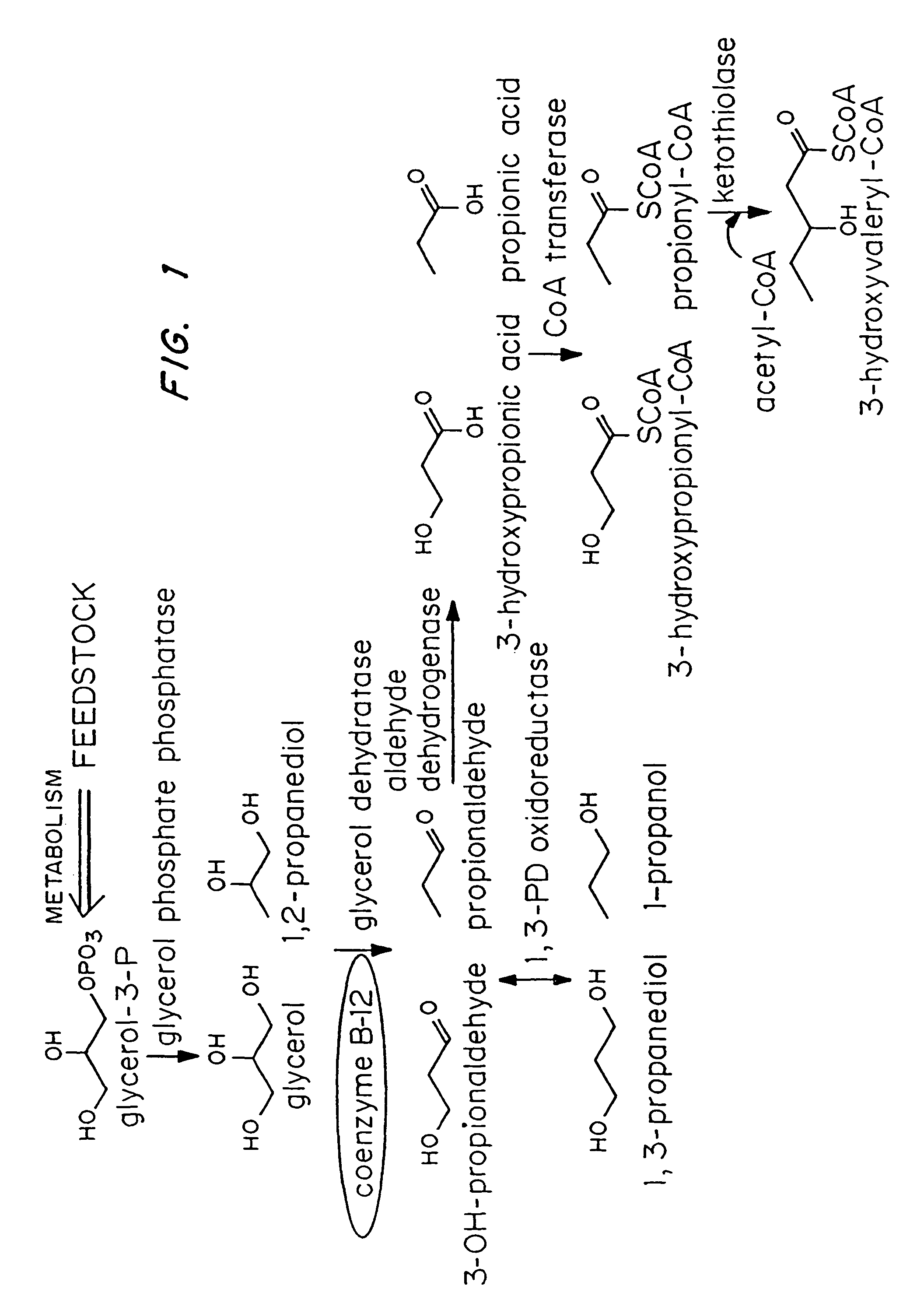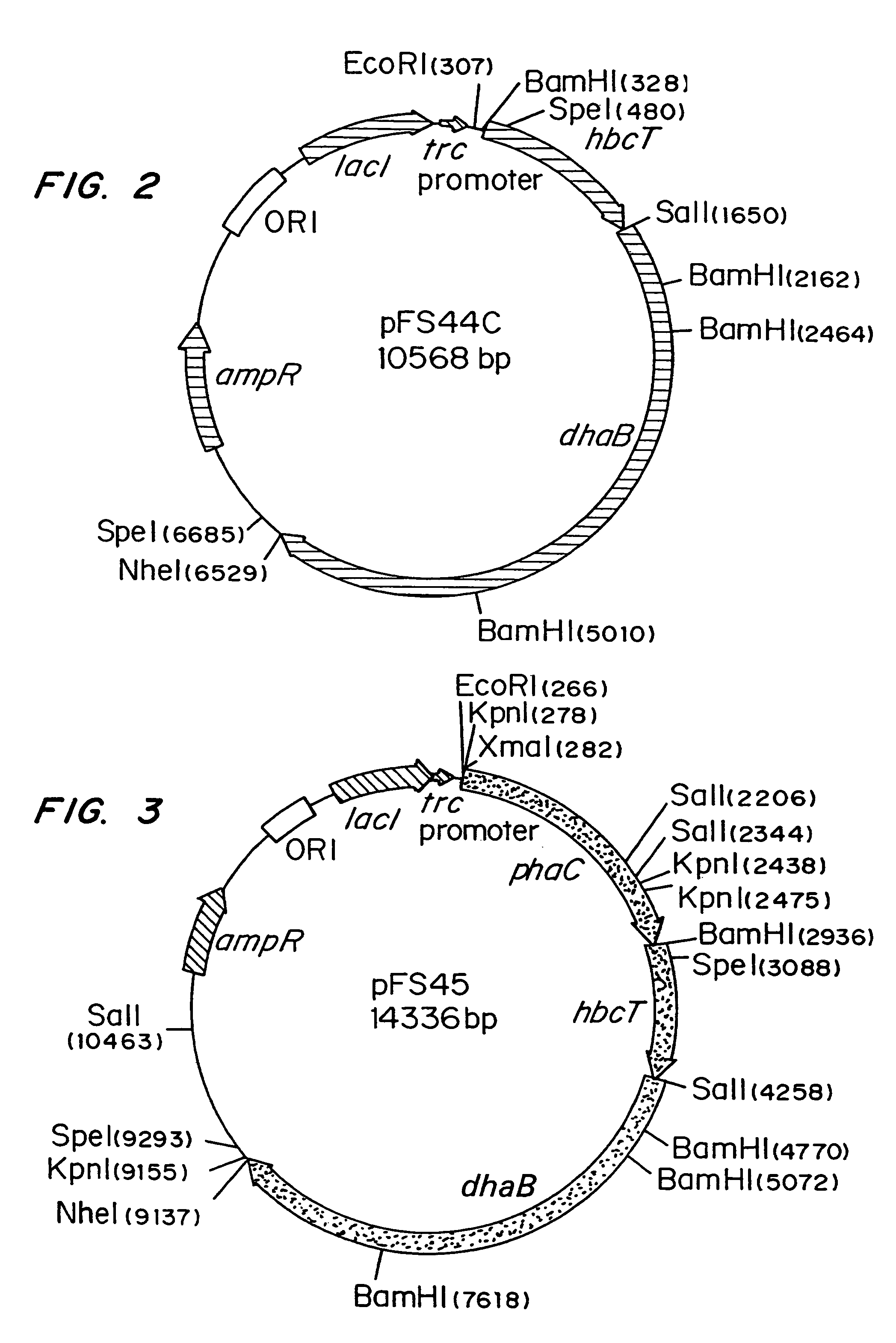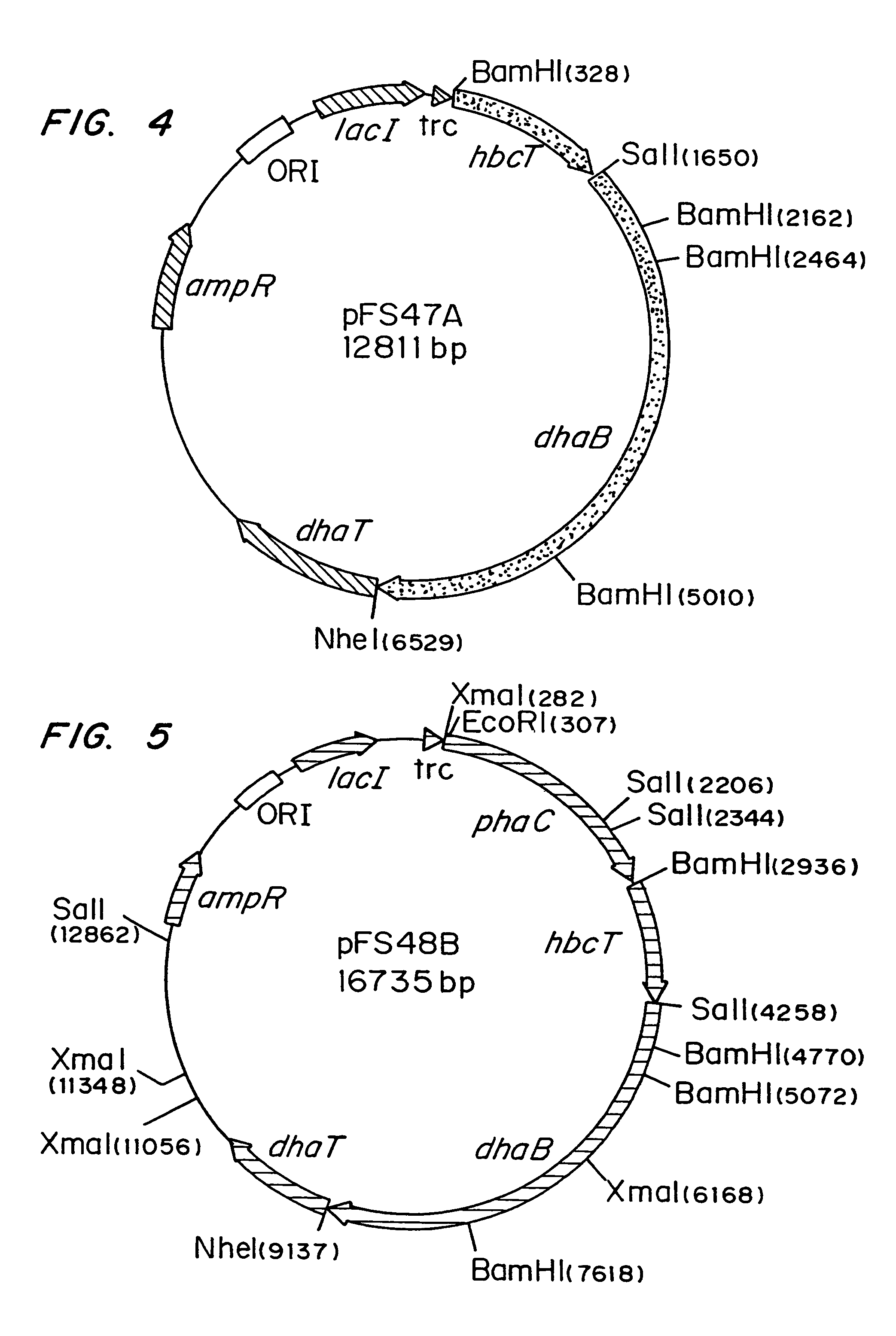Polyhydroxyalkanoate production from polyols
a technology of polyols and polyols, applied in the field of polyhydroxyalkanoate production, can solve the problems that the copolymer range of bacteria is not achieved in plants, and achieve the effect of ensuring recovery
- Summary
- Abstract
- Description
- Claims
- Application Information
AI Technical Summary
Benefits of technology
Problems solved by technology
Method used
Image
Examples
example 1
PHBV Production from Glucose and 1,2-propanediol
[0040]Escherichia coli strain MBX769 (Huisman et. al. PCT WO 99 / 14313), which expresses the PHA synthesis genes from Zoogloea ramigera (acetoacetyl-CoA thiolase, acetoacetyl-CoA reductase, and PHA synthase) containing plasmid pFS44C was used to synthesize PHBV from glucose and 1,2-propanediol. Plasmid pFS44C (shown schematically in FIG. 2) contains the genes encoding Klebsiella pneumoniae glycerol dehydratase (dhaB), isolated from pTC53 (Skraly et al., 1998, Appl. Environ. Microbiol. 64:98-105), and the Clostridium kluyveri 4-hydroxybutyryl-CoA transferase (hbcT), isolated from pCK3 (Söhling and Gottschalk, 1996, J. Bacteriol. 178:871-880), both in one operon under control of the trc promoter. pFS44C also contains the lac repressor gene (lacI), an ampicillin resistance gene (ampR), and an origin of replication (ORI), all derived from the vector pSE380) (Invitrogen; La Jolla, Calif.).
[0041]The cells were precultured in 100 mL of a mediu...
example 2
PHBV and Growth from 1,2-propanediol as Sole Carbon Source
[0044]MBX 184 was selected for growth on 1,2-PD, to yield E. coli strain MBX 1327. MBX1327 was transduced with the PHB genes ABC5KAN from MBX1164 to yield E. coli strain MBX 1329. MBX1164 is MBX247::ABC5KAN (encoding the thiolase, reductase and PHB synthase from Z ramigera). MBX247 is LJ5218 (Spratt, et al. 1981 J. Bacteriol. 146:1166-1169) E. coli genetic stock center CGSC 6966) mutagenized with 1-methyl-3-nitro-1-nitrosoguanidine (NTG) by a standard procedure (Miller, J., A short course in bacterial genetics, 1992, Cold Spring Harbor Laboratory Press, Cold Spring Harbor, N.Y.), and screened for the ability to grow with 1,2-propanediol as sole carbon source. Strains of E. coli with this ability and methods for generation of such strains have been described previously (Sridhara et al., 1969, J. Bacteriol. 93:87). E. coli strain MBX1329 has both the capability to grow with 1,2-propanediol as the sole carbon source and to synth...
example 3
Poly(3-hydroxypropionate) from 1,3-propanediol and 1,3-propanediol from glycerol
[0047]Escherichia coli strain MBX184, which is deficient in the fadR gene and expresses the atoC gene constitutively, was used to synthesize 1,3-propanediol from glycerol and poly(3-hydroxypropionate) from 1,3-propanediol. In both instances the cells harbored plasmid pFS45 (shown schematically in FIG. 3) which contains genes encoding Klebsiella pneumoniae glycerol dehydratase, Clostridium kluyveri 4-hydroxybutyryl-CoA transferase, and Ralstonia eutropha PHA synthase, all in one operon under the control of the trc promoter. The cells were cultivated as described in Example 1, except that glycerol was present instead of 1,2-propanediol.
[0048]HPLC analysis showed that the cells in the coenzyme-B12-containing medium synthesized 1.3 g / L of 1,3-propanediol while the cells in the medium free of coenzyme B-12 did not synthesize any 1,3-propanediol. The same strain was also cultivated using the method of Example ...
PUM
| Property | Measurement | Unit |
|---|---|---|
| mol % | aaaaa | aaaaa |
| volume | aaaaa | aaaaa |
| flow rate | aaaaa | aaaaa |
Abstract
Description
Claims
Application Information
 Login to View More
Login to View More - R&D
- Intellectual Property
- Life Sciences
- Materials
- Tech Scout
- Unparalleled Data Quality
- Higher Quality Content
- 60% Fewer Hallucinations
Browse by: Latest US Patents, China's latest patents, Technical Efficacy Thesaurus, Application Domain, Technology Topic, Popular Technical Reports.
© 2025 PatSnap. All rights reserved.Legal|Privacy policy|Modern Slavery Act Transparency Statement|Sitemap|About US| Contact US: help@patsnap.com



